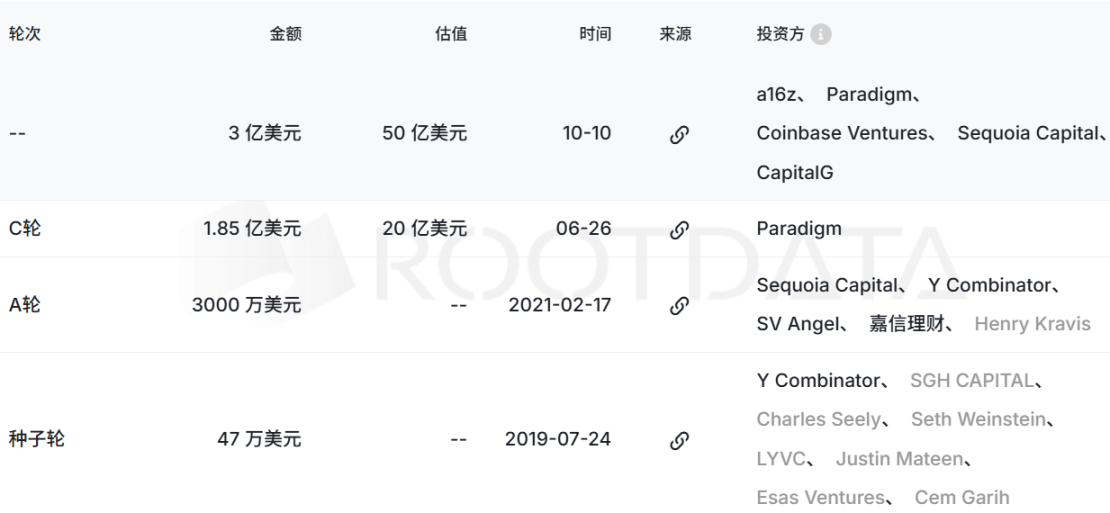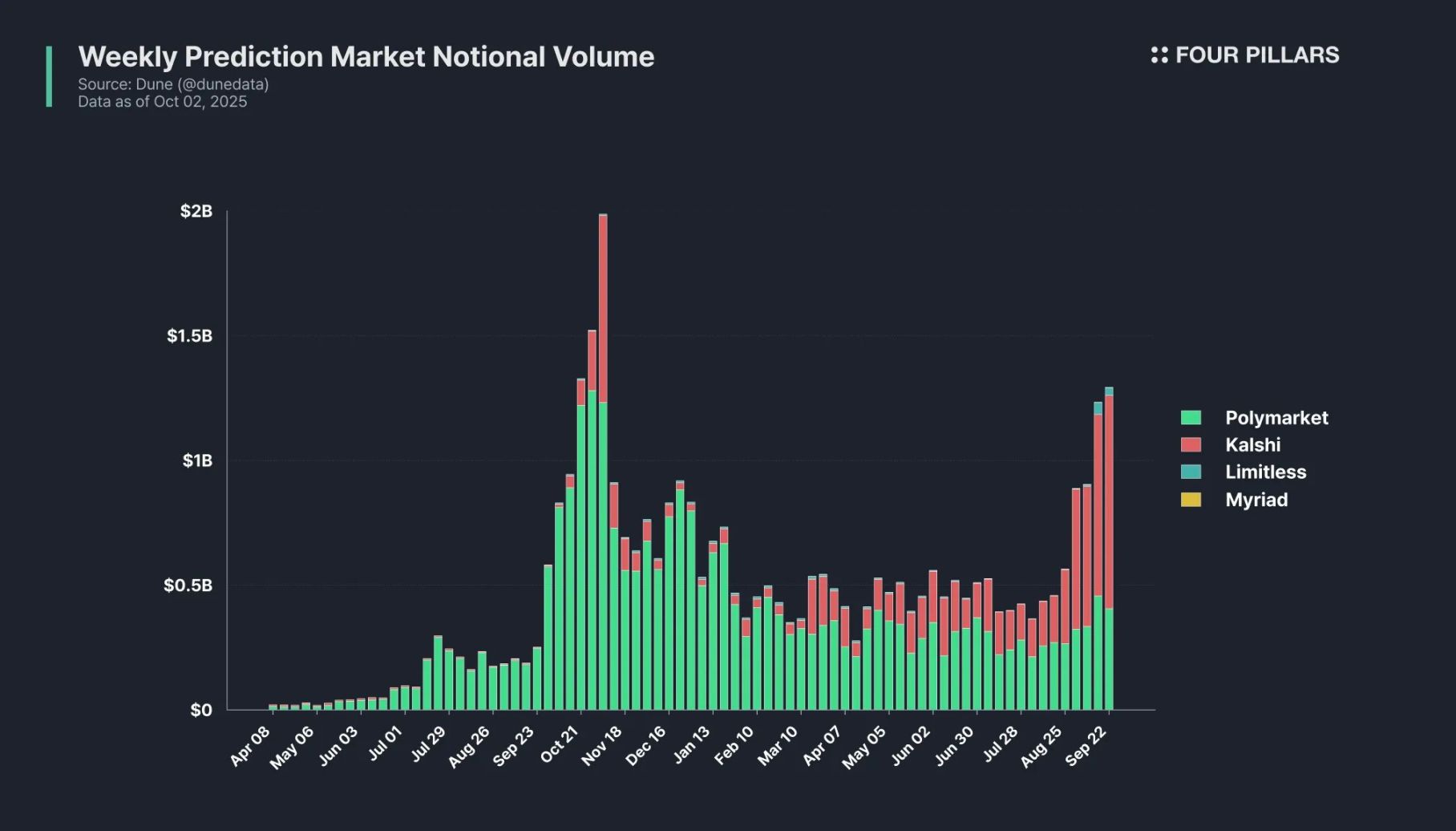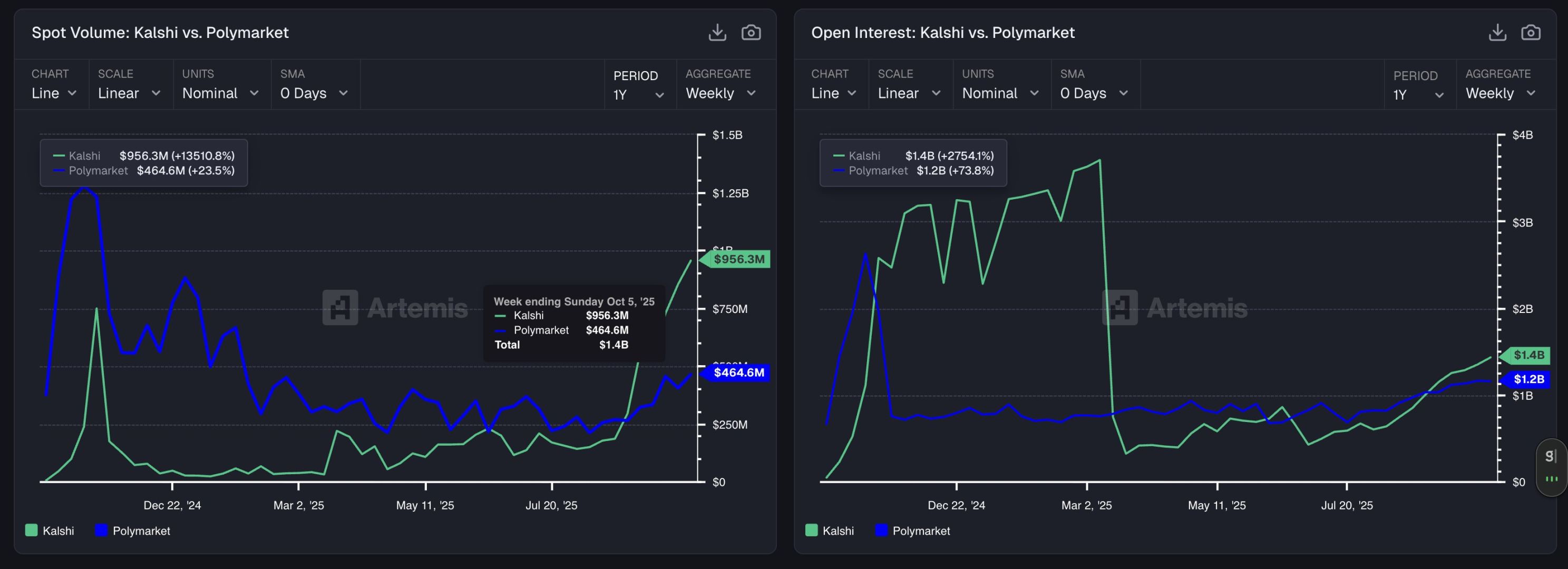$300 million financing, CFTC approval, Kalshi is vying for prediction market dominance
The valuation of the US compliant prediction market platform Kalshi has surged to 5 billion dollars.
The valuation of the US-compliant prediction market platform Kalshi has soared to $5 billion.
Written by: 1912212.eth, Foresight News
In the wave where crypto and finance converge, prediction markets are becoming the next billion-dollar track. On October 10, the US-compliant prediction market platform Kalshi completed a financing round of over $300 million, with its valuation soaring to $5 billion. This round was led by Sequoia Capital and a16z, with existing shareholders such as Paradigm also participating. Kalshi also plans to allow customers from over 140 countries to place bets on its website.
Just four months ago, in June, Kalshi was valued at $2 billion in a $185 million round. Now, its valuation has doubled, reflecting investors’ fervent confidence in prediction markets.
Star-studded Team and VC Lineup
Kalshi was co-founded by Tarek Mansour and Luana Lopes Lara. Mansour graduated from MIT and is a seasoned player in quantitative trading, having served as an executive at the Chicago Mercantile Exchange (CME), with expertise in derivatives pricing and risk management. Lara comes from a Brazilian fintech background and was responsible for emerging market strategies at Morgan Stanley. The two have targeted the often-overlooked “event contracts” in traditional finance—i.e., prediction bets on future events.

Unlike Polymarket’s blockchain-native approach, Kalshi chose to build a compliant platform from scratch, obtaining regulatory approval from the Commodity Futures Trading Commission (CFTC) early on, becoming the first regulated prediction market in the US. This “difficult but responsible path,” as described by a16z Growth Fund partner Alex Immerman, has allowed Kalshi to stand out amid regulatory storms.
The team lineup is Kalshi’s core competitive advantage. In addition to the founding duo, Kalshi has attracted numerous Wall Street elites and tech experts. Chief Technology Officer (CTO) Eli Levine comes from Google Cloud, where he led large-scale data infrastructure projects, ensuring the platform’s low latency and high throughput. Product lead Sarah Chen joined from Coinbase, where she spearheaded Kalshi’s expansion into sports and political markets, seamlessly integrating complex parlay (combination betting).
Notably, Donald Trump Jr., the eldest son of Donald Trump, joined Kalshi’s advisory board in January 2025. He not only brings political insight but also helps the platform’s explosive growth in election markets—during the 2024 US presidential election, Kalshi’s presidential win probability predictions achieved an accuracy rate as high as 85%, far surpassing traditional polls. The team has grown to over 150 people, covering quantitative modeling, compliance, and user growth, with an average industry experience of over 10 years. This “Wall Street + Silicon Valley” hybrid model keeps Kalshi ahead in product iteration: expanding from single event contracts to multi-dimensional markets such as sports, weather, and economic data, with average daily active users exceeding 100,000.
The VC lineup behind the financing is truly impressive, highlighting the strategic value of prediction markets. Sequoia Capital, the lead investor in this round, is a Silicon Valley legend with a portfolio including Airbnb and Stripe, and was an early backer of Kalshi’s regulatory advantage. As a crypto-native fund, a16z’s founder Marc Andreessen has publicly praised Kalshi for “reshaping event-driven finance.” Paradigm led the $185 million round in June and has now added to its investment, with a cumulative injection of over $200 million. Other investors include Coinbase Ventures and Bond Capital, the latter led by former a16z partner Mary Meeker and focused on data-driven platforms. Kalshi’s total financing has reached about $591 million across three rounds: a $15 million seed round in 2021 (led by SV Angel), a $50 million Series A in 2023, and the current Series D.

Another competitor, Polymarket, was founded in 2020 by Shayne Coplan as a blockchain-native prediction market based on the Polygon chain, allowing users to bet directly with USDC. On October 7, 2025, Polymarket announced it had received up to $2 billion in investment from Intercontinental Exchange (ICE), the parent company of the New York Stock Exchange.
Comparison with Polymarket
Data performance is the hardcore support for Kalshi’s financing. Kalshi’s liquidity pool depth has an average slippage of <0.1%, far below the industry average. Financially, the platform is already profitable, with revenue exceeding $200 million in the first half of 2025, mainly from a 0.5%-1% transaction fee. According to dune data, Kalshi’s weekly prediction market trading volume has rapidly risen from a follower to surpass Polymarket.

Kalshi outperforms Polymarket on multiple dimensions. First, regulatory compliance: Kalshi is a CFTC-designated contract market (DCM), so US users do not need a VPN; Polymarket lost US traffic due to a 2022 ban and relies solely on overseas users, recently re-entering the US through the acquisition of QCX LLC, though the specific launch date is still unknown.
Second, user experience: Kalshi supports USD deposits and simplified KYC, making it suitable for institutions; Polymarket relies on crypto wallets, with higher gas fees and volatility. In terms of market coverage: Kalshi occupies the vast majority of the US market share, but has a lower share in other countries and regions, with richer sports and economic contracts; Polymarket focuses more on political and crypto events, but its US penetration remains low due to compliance factors.
According to the latest data from polymarketanalytics, although Kalshi’s total trading volume is only $400 million, far behind Polymarket, it leads Polymarket in the total number of prediction markets and total open interest.

If we narrow the time frame, we can see Kalshi’s rapid growth momentum. According to Artemis monitoring data, in the past year, Kalshi’s market trading volume has soared 135 times to $956.3 million, while Polymarket’s is only $464.6 million.

The latest data from The Block shows that the number of daily active prediction markets on Kalshi has reached a record high, rising to over 75,000.

It is worth mentioning that on November 6, 2024, Kalshi topped the free chart of the Apple App Store, surpassing Polymarket. In October this year, Kalshi’s head of crypto, John Wang, said in an interview with The Block at the Token2049 conference in Singapore that Kalshi will appear on “every major crypto app and exchange” in the next 12 months.
Polymarket’s founder once hinted on Twitter that a POLY token would be launched, and the market has begun to pay attention to whether Kalshi will also issue a token in the future. Although there are some market rumors speculating that it may explore tokenization in the future, there has been no mention of a token launch in official channels or financing announcements.
Disclaimer: The content of this article solely reflects the author's opinion and does not represent the platform in any capacity. This article is not intended to serve as a reference for making investment decisions.
You may also like
Brevis launches The Proving Grounds event
Showcase the achievements of zero-knowledge technology in real-world applications and reward participants through the Brevis Sparks incentive campaign.
Was the 10.11 crash an organized attack? A detailed analysis of two major doubts
Was the largest liquidation in history a deliberate attack?

Stop fantasizing, the altcoin season may not come
In the cryptocurrency sector, holding positions and waiting is a slow form of financial suicide.

Bitmine’s $480.7 Million Ethereum Purchase Signals a Bold Bet
Quick Take Summary is AI generated, newsroom reviewed. Bitmine purchased $480.7 million worth of Ethereum during the recent market crash. The Ethereum whale purchase boosted sentiment and triggered renewed optimism in a potential crypto market rebound. Analysts believe Bitmine is betting on Ethereum’s long-term value and blockchain utility. The move may signal stronger institutional involvement and the beginning of a fresh accumulation cycle.References BREAKING 🚨BITMINE BOUGHT $480.7 MILLION WORTH OF $ETH
